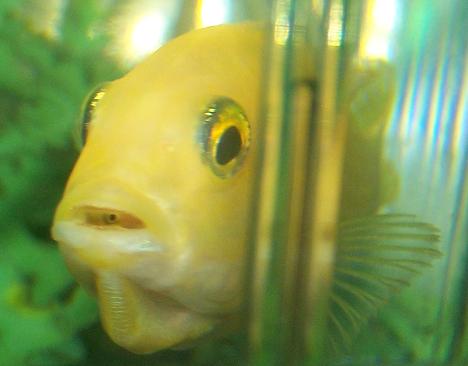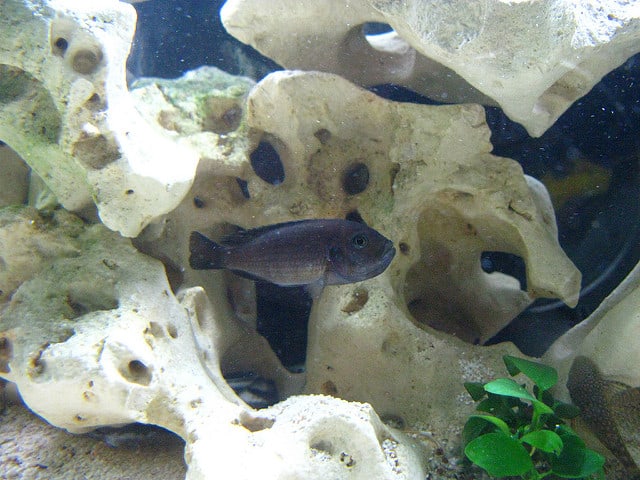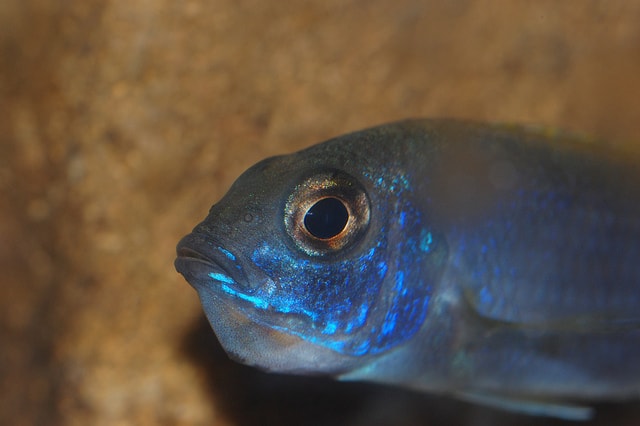 Whether you are new to the hobby or a well-versed fish keeper and you have kept African Cichlids chances are they are going to breed at some point! For some people, it happens straight away and for others it can take a long time. It all depends on your setup, your fish and most importantly how ideal a condition you provide for your fish. African Cichlids are extremely popular tropical fish available in a huge variety of colours, shapes and sizes and almost all of them happily breed in the home aquarium. Knowing the signs and what to look for can really help you get to know your fish and prepare you should you wish to keep your fry and raise them.
Whether you are new to the hobby or a well-versed fish keeper and you have kept African Cichlids chances are they are going to breed at some point! For some people, it happens straight away and for others it can take a long time. It all depends on your setup, your fish and most importantly how ideal a condition you provide for your fish. African Cichlids are extremely popular tropical fish available in a huge variety of colours, shapes and sizes and almost all of them happily breed in the home aquarium. Knowing the signs and what to look for can really help you get to know your fish and prepare you should you wish to keep your fry and raise them.
Fish keeping is a very rewarding hobby, specially when keeping African Cichlids. Very few other aquarium fish can provide the same character, colouration and behaviour observed in African Cichlids. These fish come from Africa’s Great Rift Valley Lakes, with Lake Malawi cichlids the most popular, Lake Tanganyika cichlids a close second and a few species from Lake Victoria too. Almost all African cichlids are mouth brooders, mainly maternal mouth brooders (some Tilapia species are paternal mouth brooders.) All of this means you can enjoy one of the many wonderful behaviour of your cichlids.
Mouth brooders lay eggs on the substrate or a flat rock/surface were the male of the species fertilises them. The process really is a wonder if you ever catch your cichlids breeding it’s one the traits you cannot observe in other aquarium fish. The male and female do almost a dance around each other and the male with his breeding colours on tries to lure the female to his nest to start the breeding process. Male become more aggressive/territorial and show intense colouring during breeding. Extremely aggressive species can cause major problems in the tank during breeding and are best kept in a species only setup with a ratio of 1 male to several females or in a mixed male only setup.
When you see the signs above in a mixed male and female setup chances are they will breed soon after. However, the mating “dance” can last serval days or more as the male will work to entice the female into his nest, another reason why not everyone will have a batch of fry straight away.
So what does a holding female look like?
It’s actually hard to miss once you know what to look for! African cichlids have throat pouch known as the Buccal Cavity were the eggs are stored after being fertilised. Once the female has a mouth full of eggs her throat expands to the point were it’s almost impossible to close the mouth. If you see one or more of your cichlids looking like they have a full mouth it’s a good chance they are carrying eggs. It can also look like they have something stuck in their mouth. A holding female will be reclusive and often hide around the tank but don’t be alarmed this is their natural behaviour to protect herself and her fry from other fish.
The holding process can take anywhere from 18 to 28 days during which time the female does not eat so as not to risk the eggs or fry escaping or dying. She will hold the eggs until the fry are free swimming at which point she will release them. Maternal instincts of the mother still last between a few days to a week after she releases the fry, the fry can run back into the mother’s mouth and hide if she senses danger.
It is normal for the mother to be thin and weak after a month of not eating and so ideal scenario is to separate her into a different tank so she can have her fry alone and stress free, once she releases she will eat straight away and be ready to put back in the main tank after a few days allowing her to put on some weight.
 Notes:
Notes:
Some females will not release in the main tank with all the other fish around them and will actually hold for much longer than a month resulting in their death and the fry. This is specially true in setups with minimal hiding places and more aggressive Cichlids because the holding female will not be able to find sanctuary.
If you feel you are not ready to have your cichlids breed then the best option is to have mixed male only tank. Buy your fish only from reputable sources who don’t hormone their fish. A hormoned fish can appear like a male but is actually a female and the beautiful colours will fade away soon after and reveal a female fish. The best way to sex African Cichlids is by paying attention to their colours males will show signs of colouring up even as juveniles. Look for pointed tips to the dorsal and anal fins which are a trait for male fish, females will have rounded fins.
Conclusion:
If you see one of your cichlids with a mouthful of eggs don’t be alarmed, if you have a spare tank that’s empty relocating the mother into it after a week of holding the eggs it’s the best way to ensure your fish is not stressed anymore than necessary. Not everyone will have a spare tank but you can buy breeder nets/boxes for very cheap which can be placed in the aquarium, you can then move your fish into it and allow her to release her fry naturally. Some of these can be clipped to the inside edge of the aquarium as an alternative.
Some female African Cichlids will lay eggs and begin to hold them even if no males of the same species are present in the tank, these eggs will be unfertilised and your fish will either swallow or release them within a few days to a week. Fertilised eggs are yellow in colour compared to white eggs which have not been fertilised.
 Stripping the fry:
Stripping the fry:
Stripping the fry is a popular method used by breeders which can either be done a week into the holding period or in the final days of the process. Both of these methods mean you can get the eggs or fry out of the mother so she can remain in the main tank. If removing towards the end of the holding process the fry will be free swimming and can then be kept separately from which point all of them should survive. If removing early the eggs may have not hatched so an egg tumbler will be required until the fry are free swimming, essentially doing the job of the mother. This is the best way because it means the mother does not go a month without food!
I don’t recommend stripping first time mothers however, as this can cause them to not hold full term in the future.


Related Posts
A Deeper Look In To Loach Fish Species
How Much Salt Should I Add To My Freshwater Aquarium
Everything You Need To Know About Using T5 Lights For Your Aquarium